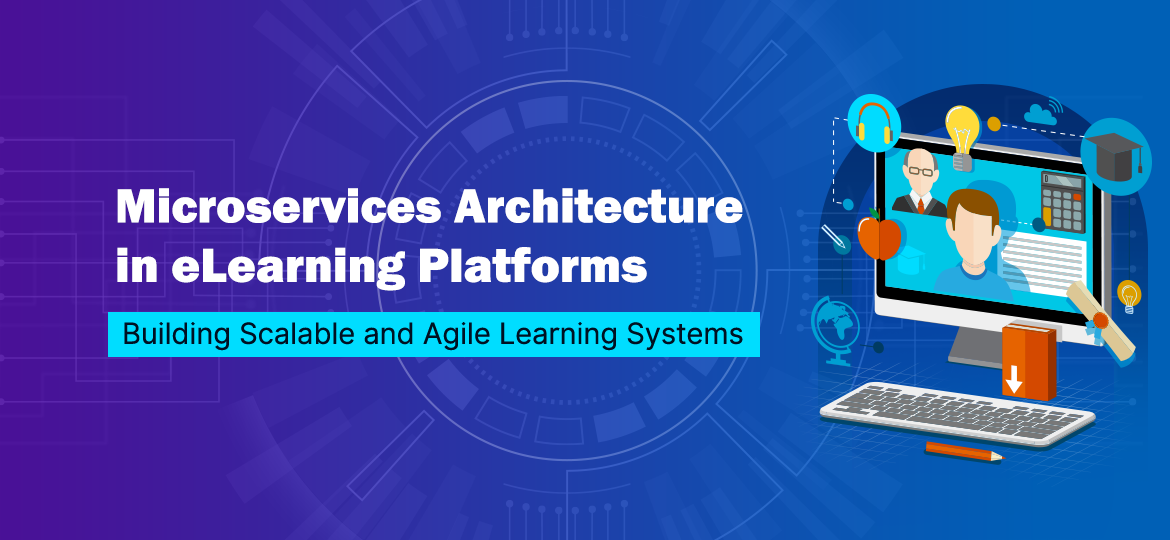
With the eLearning sector becoming increasingly sophisticated and user expectations continuing to grow, there is an ever-increasing demand for scalable, agile, and resilient digital learning platforms. Conventional monolithic Learning Management Systems (LMSs) tend to fail to deliver these changing requirements because their tightly-coupled, rigid nature cannot adapt. In comes microservices architecture – a contemporary software development paradigm that’s revolutionizing how eLearning platforms are developed, maintained, and scaled.
What is Microservices Architecture?
Microservices architecture is a design strategy in which an application is developed as a set of little, independent services that interact with one another via APIs. Every microservice specializes in a given business function and can be developed, deployed, and scaled independently.
In eLearning, this can imply isolating user authentication, content delivery, tracking of course progress, assessments, and analytics as separate services. These can then improve independently without affecting the rest of the system.
Monolithic vs. Microservices in eLearning
- In a monolithic LMS, all functionalities and features are bundled into one codebase. While this may be easier to deploy at first, it tends to become a bottleneck in the long run:
- Scaling one feature (e.g., real-time quizzes) means scaling the whole application.
- Changing one part may break others.
- Limited customization makes it hard to serve different learner segments or clients.
- A microservices-based LMS is more versatile.
- User management, reporting, content rendering, and AI recommendations can be individually deployed as services.
- Downtime is reduced since failures or updates in one microservice won’t impact the whole system.
- Developers are free to use the most appropriate technology stack for every service.
Advantages of Microservices in eLearning Platforms
- Scalability at Will
Microservices make eLearning platforms scalable for individual components as per usage. For example, when there is a rollout of a large corporate training program, the video streaming microservice can be scaled separately without having an impact on other services.
- Improved Development Cycles
With separate teams for isolated services, new features can be developed and rolled out quickly. This avoids delays in time-to-market and allows constant innovation.
- Personalization and Customization
Customers only select the services they require – whether gamification, AI teachers or deep analytics-making highly customized training solutions possible.
- Solid Integration Capabilities
Microservices integrate perfectly with third-party applications via APIs. This is particularly beneficial in eLearning where integration with applications such as Zoom, xAPI, SCORM players, CRM or HRMS is necessary.
- Enhanced Fault Tolerance
If one microservice crashes (e.g., certification generation), others such as user login or accessing a course will not be affected. This improves system reliability overall.
- Tech Stack Flexibility
Different languages or frameworks are used in each service by development teams. For instance, Node.js for the real-time chat service and Python for analytics.
Real-World Application: From Monolith to Microservices
Consider a corporate training company facing repeated downtime during the busiest usage times. Their monolithic LMS was not able to cope with traffic surges and was inflexible to deploy new functionality.
By moving towards a microservices architecture, they broke their platform up into separate services:
- Authentication & User Management
- Course Content Delivery
- Assessment Engine
- Progress Tracking
- AI-Powered Recommendations
- Analytics & Reporting
Each service was hosted in containers (through Docker) and orchestrated using Kubernetes for dynamic scaling. This not only enhanced platform uptime and performance but also enabled the client to add a new gamification feature in two weeks—something that had taken months before.
Technical Considerations and Challenges
While the benefits are clear, adopting microservices isn’t without challenges:
- Service Orchestration: Coordinating multiple services to work harmoniously requires orchestration tools and careful planning.
- Data Consistency: Each service may have its own database, which raises challenges around maintaining consistency.
- Monitoring & Debugging: Tracking issues across services demands sophisticated observability tools (like Prometheus, ELK stack or Datadog).
- Deployment Complexity: CI/CD pipelines must be carefully configured to ensure smooth deployments across all services.
That said, with the right development practices and cloud infrastructure, these challenges can be effectively managed.
HexaLearn’s Expertise in Building Modern eLearning Systems
At HexaLearn, we specialize in crafting robust, scalable, and future-ready eLearning platforms powered by microservices. Whether you’re looking to modernize a legacy LMS or build a new digital learning environment from scratch, our team of experts can help you:
- Design an optimal microservices architecture
- Build containerized, cloud-native learning platforms
- Integrate seamlessly with third-party tools and APIs
- Ensure high performance, security, and data compliance
Conclusion
The shift to microservices architecture marks a pivotal evolution in the eLearning industry. For organizations aiming to deliver high-performance, customizable, and scalable digital training experiences, microservices offer a clear path forward. With HexaLearn as your development partner, you can embrace this architecture confidently and unlock the full potential of your eLearning ecosystem.
